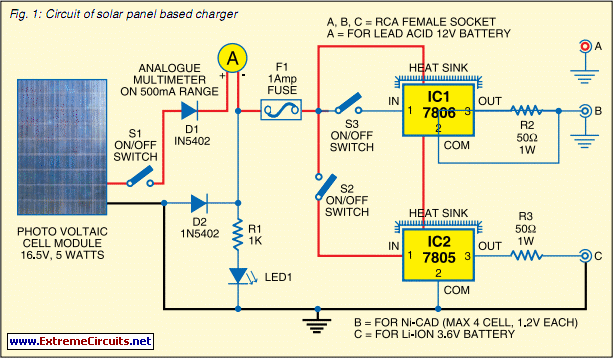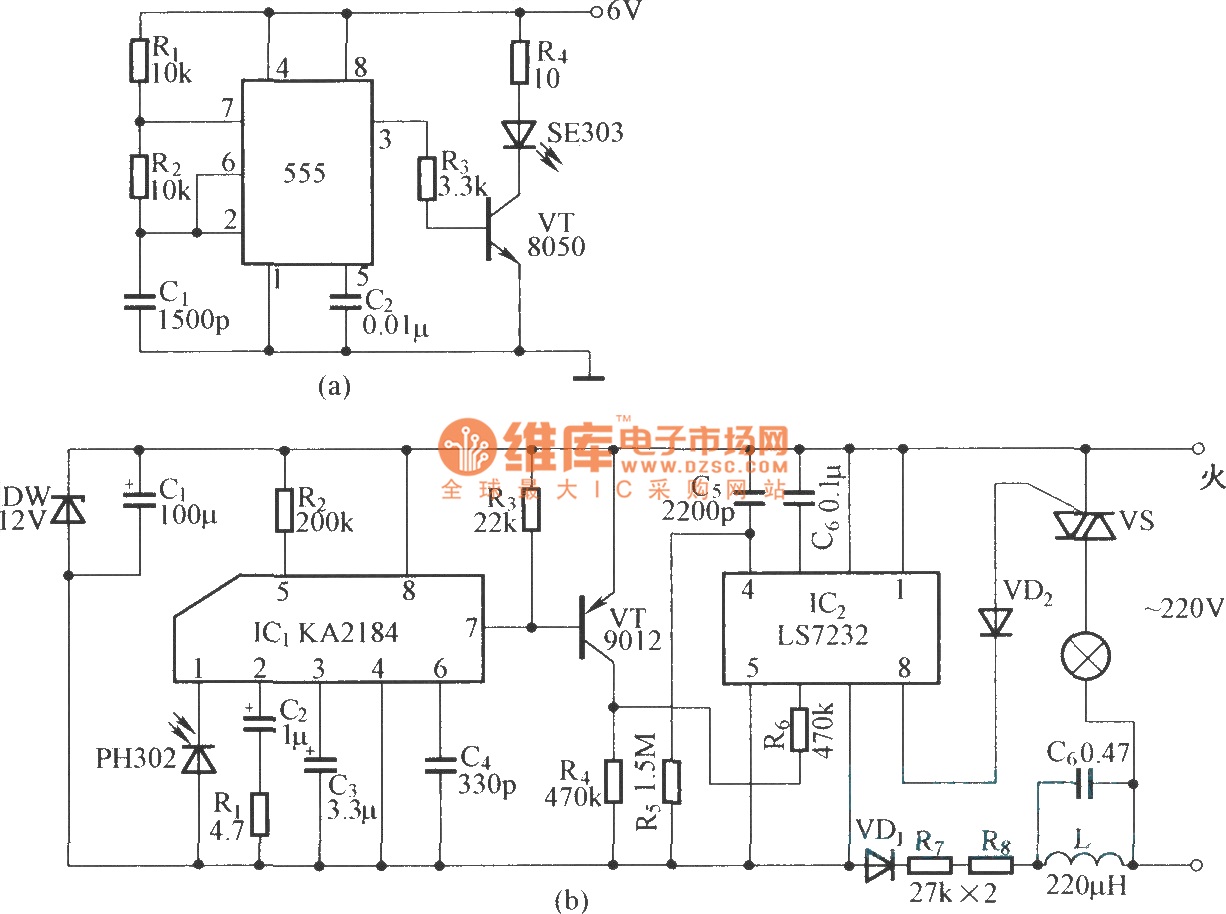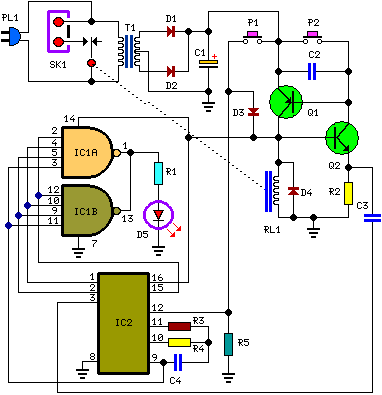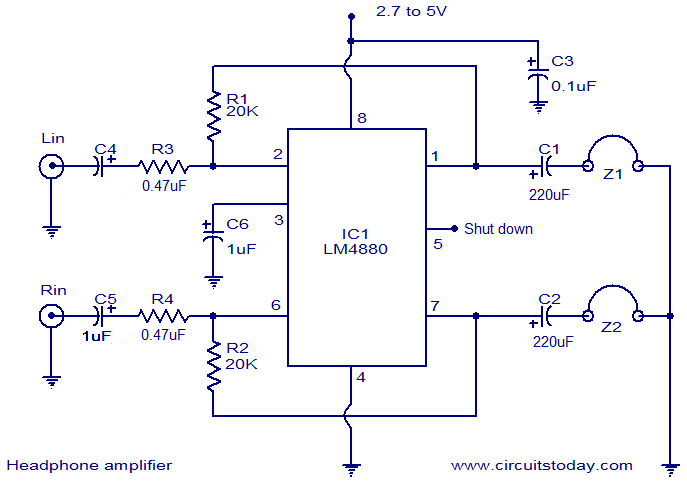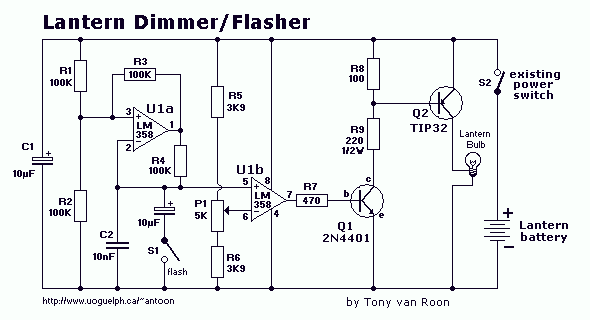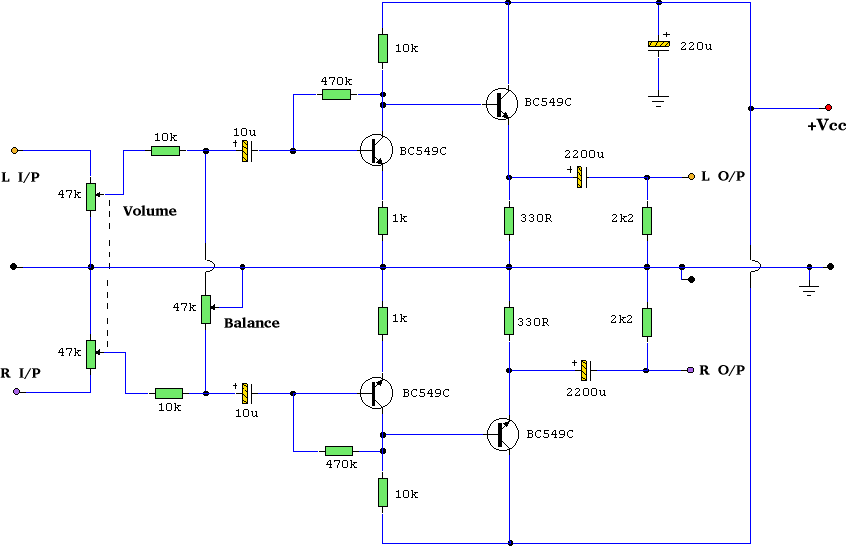
head lamp dimmer
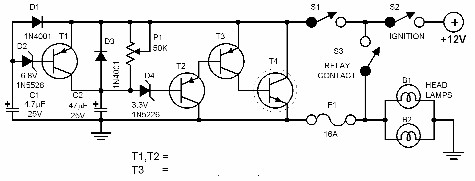
Every driver understands that intense light directed at the eyes can lead to hazardous consequences. Vehicles are equipped with a dimmer switch to reduce light intensity; however, some automotive headlamps remain excessively bright even when dimmed. The dimmer circuit presented here provides an improved solution. When activated, the circuit is connected in series to the headlamps via the dimmer switch S1. The brightness of the lamps is subsequently reduced to a predetermined level, which is set by the dimmer circuit. The dimming level can be adjusted using the potentiometer P1.
The described dimmer circuit is designed to enhance driver safety by effectively managing the brightness of automotive headlamps. The circuit operates by integrating with the existing dimmer switch (S1), allowing for seamless control over the headlamp intensity. When the dimmer switch is engaged, the circuit modifies the voltage supplied to the headlamps, ensuring that the light output does not exceed a safe threshold.
The core component of this dimmer circuit is the potentiometer (P1), which serves as an adjustable resistor. By altering the resistance value, the user can fine-tune the voltage drop across the headlamps, thereby controlling their brightness. This flexibility allows for a personalized adjustment that can accommodate varying driving conditions and individual preferences.
The circuit can be constructed using common electronic components, such as resistors, capacitors, and transistors, which together facilitate the desired dimming effect. A typical configuration may include a transistor that acts as a switch, allowing the circuit to handle the higher current required by the headlamps while maintaining efficient operation.
Additionally, implementing a feedback mechanism could further enhance the performance of the dimmer circuit. By incorporating a light sensor, the circuit could automatically adjust the headlamp brightness based on ambient light conditions, providing optimal visibility without causing glare to oncoming traffic.
In summary, this dimmer circuit offers a practical solution for controlling headlamp brightness in vehicles, contributing to safer driving experiences by preventing excessive light intensity that could impair visibility and pose risks to drivers and pedestrians alike.Every driver knows that a high intensity light striking one`s eyes can have dangerous consequencies. Cars have a dimmer switch to lower the light intensity but unfortunately, some auto headlamps are just too bright even if they are dimmed. The dimmer circuit featured here offers a better solution. When the circuit is activated, it is connected in series to the headlamps through the dimmer switch S1. The brightness of the lamps is then pulled down to a preset level which is determined by the dimmer circuit. The dim level can be preset through the potentiometer P1. 🔗 External reference
The described dimmer circuit is designed to enhance driver safety by effectively managing the brightness of automotive headlamps. The circuit operates by integrating with the existing dimmer switch (S1), allowing for seamless control over the headlamp intensity. When the dimmer switch is engaged, the circuit modifies the voltage supplied to the headlamps, ensuring that the light output does not exceed a safe threshold.
The core component of this dimmer circuit is the potentiometer (P1), which serves as an adjustable resistor. By altering the resistance value, the user can fine-tune the voltage drop across the headlamps, thereby controlling their brightness. This flexibility allows for a personalized adjustment that can accommodate varying driving conditions and individual preferences.
The circuit can be constructed using common electronic components, such as resistors, capacitors, and transistors, which together facilitate the desired dimming effect. A typical configuration may include a transistor that acts as a switch, allowing the circuit to handle the higher current required by the headlamps while maintaining efficient operation.
Additionally, implementing a feedback mechanism could further enhance the performance of the dimmer circuit. By incorporating a light sensor, the circuit could automatically adjust the headlamp brightness based on ambient light conditions, providing optimal visibility without causing glare to oncoming traffic.
In summary, this dimmer circuit offers a practical solution for controlling headlamp brightness in vehicles, contributing to safer driving experiences by preventing excessive light intensity that could impair visibility and pose risks to drivers and pedestrians alike.Every driver knows that a high intensity light striking one`s eyes can have dangerous consequencies. Cars have a dimmer switch to lower the light intensity but unfortunately, some auto headlamps are just too bright even if they are dimmed. The dimmer circuit featured here offers a better solution. When the circuit is activated, it is connected in series to the headlamps through the dimmer switch S1. The brightness of the lamps is then pulled down to a preset level which is determined by the dimmer circuit. The dim level can be preset through the potentiometer P1. 🔗 External reference
